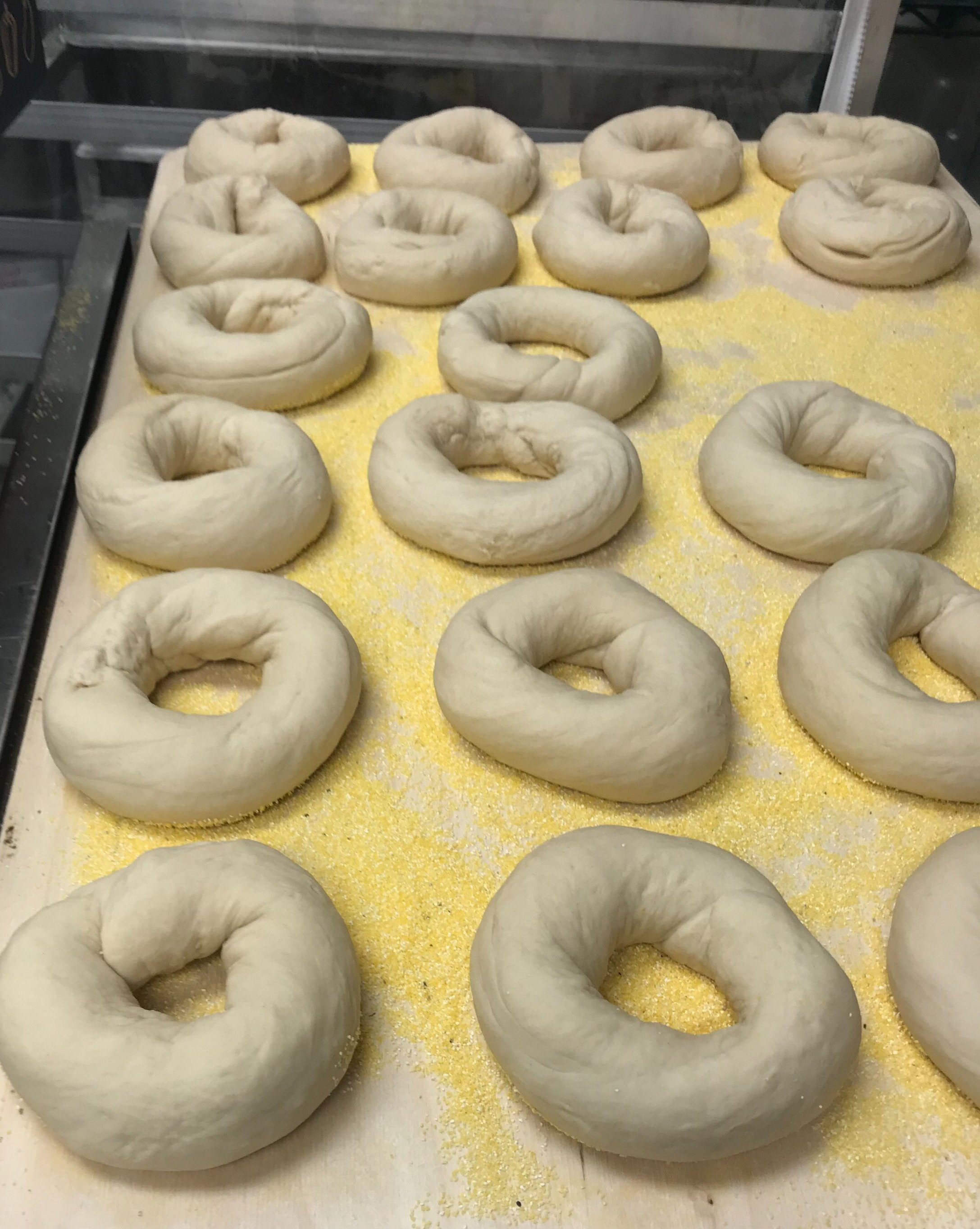Hand-Rolled Bagels
The thing that perhaps makes the most difference in bagel quality is whether the bagels are hand-rolled or machine made. The distinction is clear: the more human touch involved, the better.
What is a hand rolled bagel?
Shaping bread by hand is an art. Across countless cultures and cuisines, working dough into loaves, braids, rolls, and rings is a meaningful piece of baking tradition. Think of the classic baguette, flaky croissants, or the many-stranded challah. While there have been many miraculous inventions in commercial baking production—such as the baguette roller—many people still prefer bakeries who make their goods the time-tested way.
Rolled bagels waiting to be boiled and baked
How do you hand roll a bagel?
Most bagel makers agree that the rope technique is the proper way of making bagels. In this method, forming a ring of bagel dough is done by first rolling out pieces of risen dough into snakes and then wrapping it around your hand to connect the ends. There’s definitely a learning curve when it comes to the shaping process: some say it takes years of practice to get good at it! This is what makes handmade bagels vary slightly in shape—no two bagels are identical! Others may form bagels by poking a hole in the center of a round portion of dough, or with two ropes à la Turkish simit, but this way is definitely the industry standard.
Proofing bagels on cornmeal-dusted boards at Gotham Bagels
Tips and tricks
If you’re trying your hand at making bagels at home, there are a few pointers that might help improve your technique. Don’t worry if you don’t get a perfect chewy ring with a crisp outside the first time—practice, practice, practice! The first tip is to make sure your dough has the right hydration, or is wet enough to be pliable. This is done by adding enough water, kneading the dough until it is smooth, and letting it rise for a sufficient amount of time. Another thing is preshaping the dough: many professional bakers take the time to form each piece of dough into logs to make the final roll easier.



